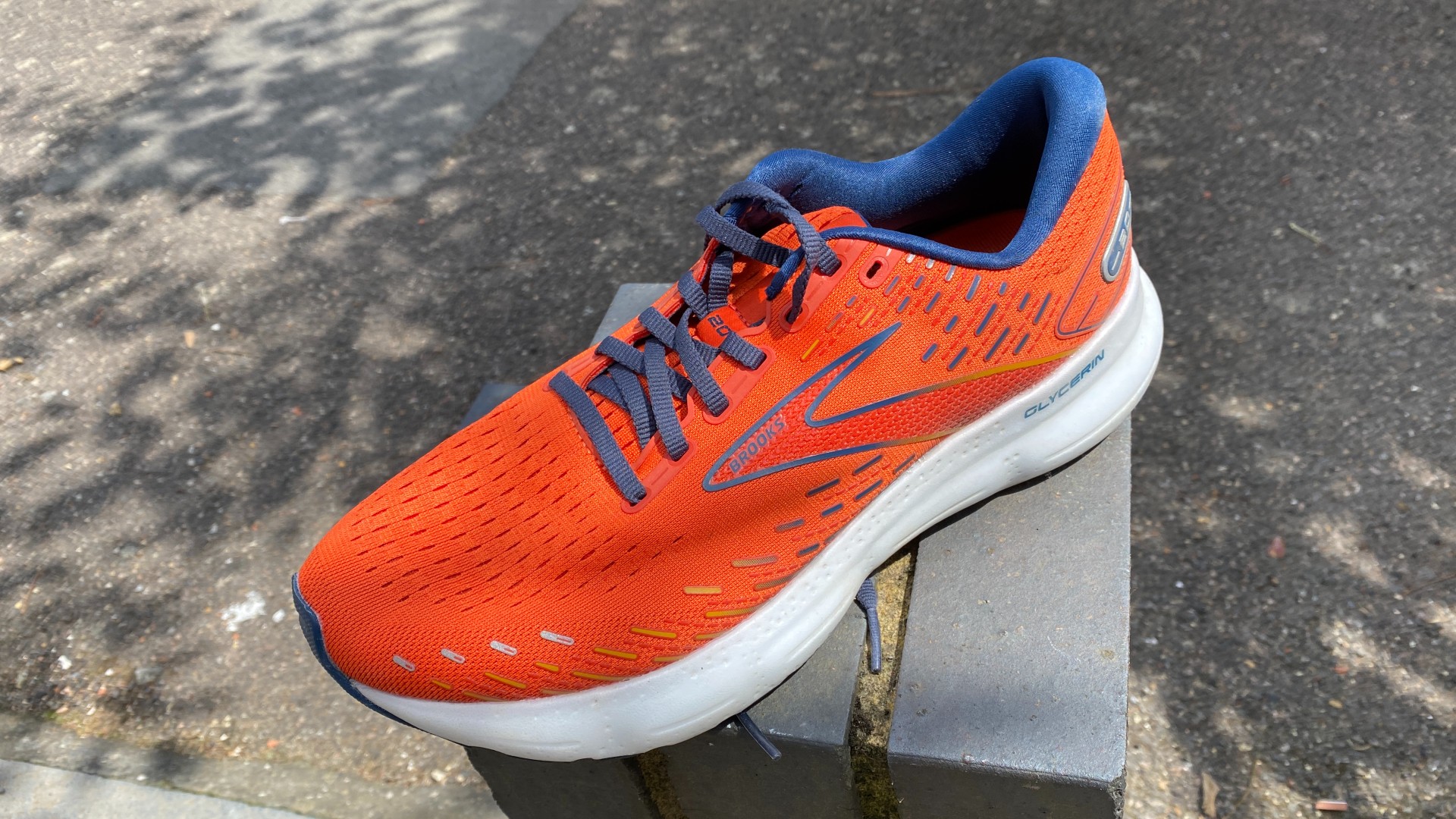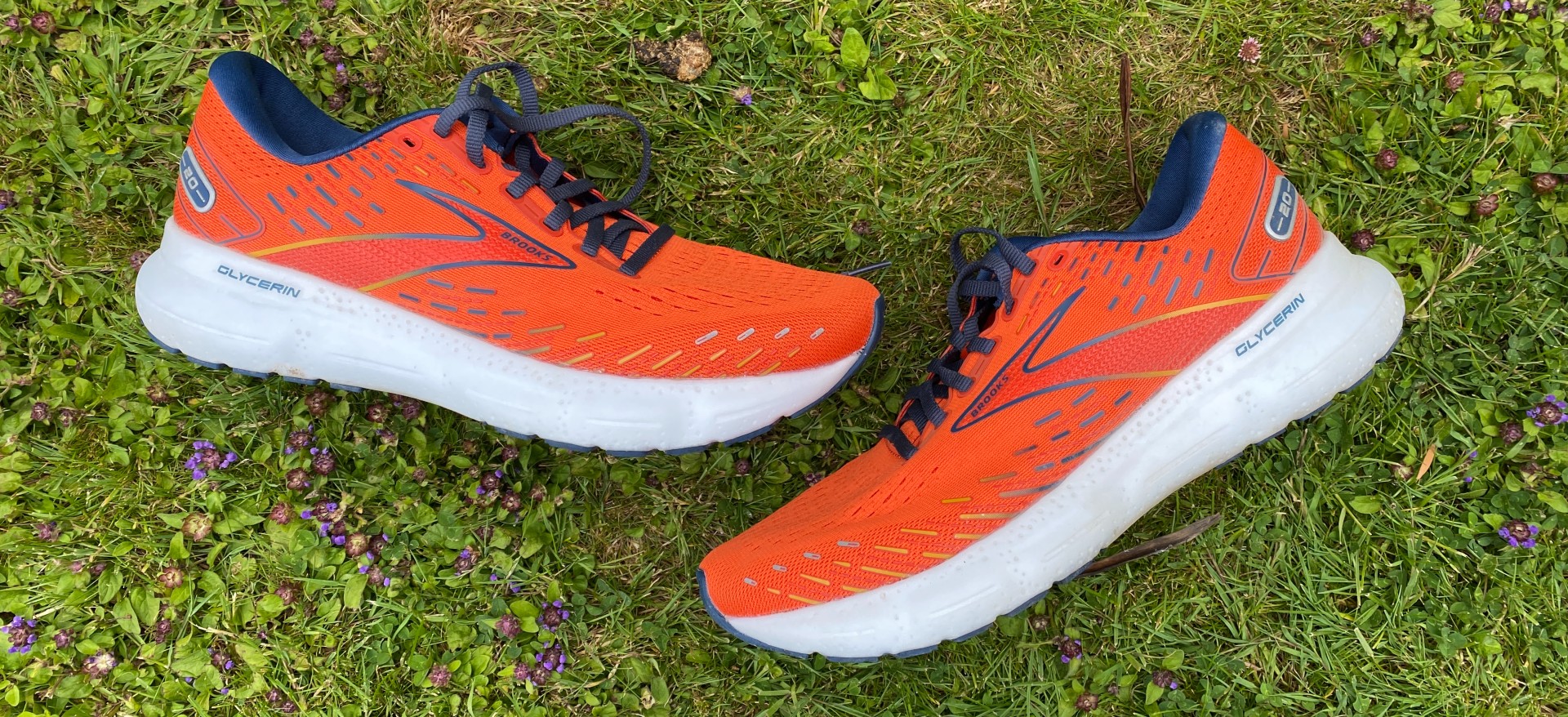Our Verdict
An improved midsole foam gives the Brooks Glycerin 20 a more enjoyable and versatile ride than its predecessor, while it’s still just as comfortable. It’s one of the best cushioned shoes available.
For
- Exceptionally comfortable
- Nitrogen-infused midsole foam
- Long-lasting
Against
- A bit heavy for fast running
- Better value elsewhere
You can trust Coach
The Brooks Glycerin line has a deserved reputation for unrivalled comfort and it’s been a fixture in our best running shoes round-up for many years. Since the shoe was so popular, Brooks only made minimal updates to the Glycerin for several generations, but change is afoot with the 20th edition of the shoe, which features an all-new midsole foam.
That foam is Brooks nitrogen-infused DNA Loftv3, and it makes the ride of the Glycerin 20 bouncier and more versatile. In short, it makes a great shoe even better, and although the Glycerin 20 is expensive, it’s one of the best cushioned shoes available and consequently it made our list of the best marathon running shoes as the top option for beginners.
Brooks Glycerin 20: Price And Availability
The Glycerin 20 is available now and costs $160 in the US and £155 in the UK on Brooks’s website, though it’s widely available for £150 elsewhere.
You can get a GTS version of the shoe that has added stability features to counter overpronation, and both the Glycerin 20 and the 20 GTS offer a choice of uppers – the standard mesh or a Stealthfit upper which is a bit lighter.

Design And Fit
I tested the standard Brooks Glycerin 20, which has a breathable mesh upper with substantial padding around the tongue and collar. The fit was spot-on in my normal size.
The new nitrogen-infused DNA Loft v3 midsole foam is a little lighter than past versions of DNA Loft, and more responsive too, while being no less cushioned.
Brooks has also adjusted the geometry of the shoe and widened the base, which it says will make the heel-to-toe transition smoother. The shoe has a 10mm drop, with a heel stack height of 34mm, and it weighs 11oz/314g in my UK size 9.
Sign up for workout ideas, training advice, reviews of the latest gear and more.
The outsole has a generous coating of rubber to provide grip and protect the midsole, though there is still some exposed foam in areas that aren’t likely to see much wear and tear.

How I Tested This Shoe
I have run 60km in the Glycerin 20, sticking mostly to the easy running it’s designed for, but I also wore it on one progression run where I finished at tempo pace. I have also tested the previous five versions of the Glycerin – you can find reviews of all of them on Coach.
Running Performance
I first experienced the nitrogen-infused DNA Loft v3 foam on the Brooks Aurora-BL shoe last year, and it delivered a springy and comfortable ride for daily training. The Aurora was an outlandish concept shoe designed to launch the new foam, so I was interested to see how it was integrated into Brooks’s established lines like the Glycerin.
The foam feels a little different on the Glycerin, in part because there’s more of it but also because the shoe has more rubber on the outsole than the Aurora. You still do get the bigger bounce from the new foam though, and it only feels better the longer you run in the shoe.
My favourite run in the Glycerin 20 was a 22km long run in which I upped the pace throughout, and the shoe felt increasingly springy. I ended every run in the shoe feeling like I’d love to keep going for a couple more kilometres – that’s how enjoyable the ride is.
It’s also more versatile than past Glycerins, and feels better and more natural at faster paces. It’s still too heavy to be an all-rounder and is at its best as the easy day option in a shoe rotation. That said, newer runners would have no problems using the Glycerin 20 for everything, and it is a good pick for longer races when you’re more focused on comfort than all-out pace.
Is The Brooks Glycerin 20 Worth It?

The Glycerin 20 maintains the line’s fine tradition as an exceptionally comfortable shoe, but the updated midsole delivers a more energetic and bouncy ride that makes the shoe more fun to use for your training runs.
If you’re a long-term fan of the line, as I am, the changes are welcome because they improve the versatility of the shoe without detracting from its signature comfort. I rate it as one of the best cushioned running shoes available alongside the Nike Invincible 2, which is a little softer and bouncier but less stable.
However, the Glycerin 20 is expensive, and you can get great cushioned shoes for a lot less. The Puma Velocity Nitro 2 is $120/£100 and while it’s not quite as comfortable as the Glycerin 20, it’s not far off, and it’s also lighter and better suited to fast running. There is also the Nike Pegasus 39, which is much cheaper and another great option as a comfortable daily trainer.
All Brooks Glycerin Reviews
- Brooks Glycerin 19 Review: Still The Most Comfortable Running Shoe
- Brooks Glycerin 18 Review: Extremely Comfortable And Perfect For Beginners
- Brooks Glycerin 17 Review: Plush And Comfortable
- Brooks Glycerin 16 Review: Superbly Comfortable

Nick Harris-Fry is a journalist who has been covering health and fitness since 2015. Nick is an avid runner, covering 70-110km a week, which gives him ample opportunity to test a wide range of running shoes and running gear. He is also the chief tester for fitness trackers and running watches, treadmills and exercise bikes, and workout headphones.

